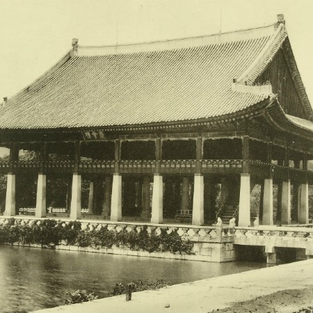Yi Seong-gye, the founder of Joseon Dynasty (1392-1910)
- Lea Moreau
- Apr 2, 2020
- 3 min read
Updated: Apr 23, 2020
We all already heard about Joseon Dynasty and the King Taejo, but do you know the story of the man who created Joseon Dynasty ? Let's discover this together !

King Taejo was born Yi Seong-gye, and became the main figure in overthrowing the Goryeo Dynasty ! He became the founder and the first king of the Joseon Dynasty, the final dynasty in Korea before the modern republic we know today. The name 'Taejo' is comprise of two Chinese characters, 'Tae', a derivative of 'Dae' (big), which means 'very big' or 'great', and 'Jo', which means grandfather.
Yi Seonggye joined the Goryeo army and rose through the ranks, seizing the throne in 1392.
Yi was an admired general in Goryeo when he decided to withdraw the army from Wihwa Island, located on the border between Goryeo and China, effectively ignoring the Goryeo king's command to attack the Chinese Ming dynasty. This was the turning point in Korean history that would end the Goryeo reign and begin the Joseon dynasty.
General Yi swept his army from the Talu River straight into the capital, defeated forces loyal to the king and forcibly dethroned King U in a de facto "coup d'état" but did not ascend to the throne right away. Only in 1392 was he capable to ascend the throne. The Goryeo Dynasty had come to an end after 475 years of rule.

Beginning of the Joseon Dynasty:
Upon taking the throne, Taejo felt that it was strategically necessary to move the seat of government out of Kaesong city, a place that represented five centuries of Goryeo power.
With Muhak's guidance, Taejo finally chose a location on the Han River for the new capital city with protective mountains surrounding the site, a place that had been home to several settlements during Korea's history, this new capital became SEOUL !
Gyeongbok Palace (Shining Happiness) , was built 1394-1395, at the beginning of Taejo's reign. Following Chinese tradition, the palace was built facing south, and the architectural style resembled the imperial palace in Beijing.
Taejo had six sons by his first wife, Sineui from the Han clan, who died before he took the throne, and was posthumously awarded the title 'Queen', and two from his second, Queen Sindeok, from the Kang clan.
His sons started killing each other for the succession and the strife between his sons saddened Taejo so much that he abdicated the throne in 1398, after only six years in power, naming his second son, Grand Prince Youngan as his successor. The bloody fighting that ensued between his sons really devastated him, Taejo abandoned the city and returned to the area of his birth, settling down in the village of Hamgyeong.
Although he only occupied the Joseon throne for six years, Taejo must be credited for his military ability and leadership during the 30 years leading up to the establishment of the Joseon Dynasty.
He died in 1408 but King Taejo remains one of the most influential King in Korean History.His story and period inspired lots of film and drama. One of the most recent drama was JTBC drama “My Country: The New Age”. You also have KBS1 historical drama called "Jeong Do-jeon" filmed in 2014.
The only place where you can admire King Taejo portrait is in Joseon, in Gyeonggijeon Shrine. The shrine was elected as an Historic Site No. 339. The King and his wife’s mortuary tablets are enshrined here at Gyeonggijeon Shrine. The structure was partially destroyed during the Imjin War (1592-1598), and the existing structure was remodeled in 1614. Inside Gyeonggijeon, the portraits of King Tae-jo and other successive kings such as Sun-jong, Cheol-jong, Yeong-jo and many others can be found on display. Gyeonggijeon Shrine is also a famous shooting site for the drama “Moonlight Drawn By Clouds".

Thank you for reading Sunchang Blog, our team will wait for you in sunchang !
























Comments